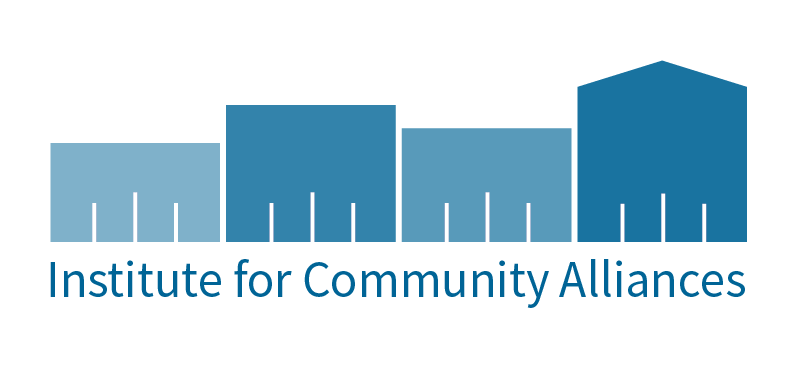New ETH Reports
The DSO report has not been working well for anyone lately. In order to make reporting for State ETH funds easier, ICA has worked with the Division of Housing to modify reporting requirements. Instead of using the DSO report out of ART, ETH funded agencies will now be able to use the ESG CAPER canned report and the ETH Entry Exit report found in ART.
Please be advised, there is currently one known issue with the ESG CAPER – the funding source filter is not working properly. ICA has submitted a case to Bowman Systems to have this issue resolved. For the time being, agencies funded with both ESG and HPP for the same program type (prevention or RRH) will not be able to pull the distinct number of clients served by each fund source. Even if you correctly choose just one funding source, all clients served under the program type will be pulled into the CAPER. For current reporting, you will need to report the same client numbers in both the ESG and HPP columns.
For instructions on how to run each report, please see this guide.
Upcoming Training Opportunities
New training webinars have been posted to our website! Click here to view the training calendar and register.
April Training
301: ART Basic Training
April 23 at 1:00 pm - 2:00 pm
This training provides the basics of “How to” run ART Reports. Learn how to access ART through ServicePoint, where reports are located in the ART folder structure, and how to complete report prompts to generate reports.
202 – Assessments Questions – Topic Rotating
April 28 at 1:00 pm - 2:00 pm
(This training is a repeat of the Assessments training presented in March)
Struggling to answer the new data element assessment questions correctly? Need to know how to count months homeless? Do you wonder….. What exactly does Night Prior mean? How do I answer if someone was on the street for 2 weeks and then the night before they were with a friend? Am I doing those darn sub-assessments correctly? If those questions sound familiar than this training is for you. Space is limited to 100 persons, so register now!
**Please see the companion Night Prior How-To Guide found on our website.
210 – Coordinated Entry – Dane CoC Only
April 30 at 1:00 pm - 2:30 pm
Included in this training:
- Functionality available in WISP for coordinated entry
- Madison/Dane CoC Coordinated Entry Assessment
- Creating Referrals for the PSH Priority List
- Referrals Canned Report – PSH Priority List
- Accepting clients from the PSH Priority List
Topic: This training will cover the coordinated entry process for permanent supportive housing in Dane County. Service providers will learn to use ServicePoint to screen and assess clients for their eligibility for permanent supportive housing, and how to refer appropriate clients to the community-wide priority list. Permanent supportive housing providers will learn how to take referrals off the community priority list to enroll clients in their programs. Please note, this training will not cover how to administer the VI-SPDAT survey to clients. The training will only cover how to enter VI-SPDAT information into ServicePoint. Users interested in more information on administering the VI-SPDAT should view the VI-SPDAT webinar via the 100K Homes Campaign website: http://100khomes.org/blog/introducing-the-vi-spdat-pre-screen-survey.
Who should attend: This training is for Dane CoC service providers. Emergency shelter providers, outreach workers and other ServicePoint users who will be screening clients and referring clients to the community-wide permanent supportive housing list should send at least one current ServicePoint user. Permanent supportive housing programs that will be taking referrals off the community priority list must also send at least one current ServicePoint user.
May Training
302 – Data Clean Up Reports (ART)
May 12 at 10:00 am - 11:30 am
This training will provide an overview of reports available to clean up data in WISP. This training will cover how to run specific data completeness and data quality reports for the WI UDE Assessment (excluding sub-assessment data), and how to read the report.
303 – Sub-Assessment Clean Up Report (ART)
May 19 at 2:00 pm - 3:30 pm
This training will provide instruction on how to run the Sub-Assessment Clean Up Report and how to read the report. This training will cover how to find incongruent data, duplicate entries, and missed verifications for the sub-assessment data that is entered on the WI UDE Assessment and other program-specific assessment. Data from the following sub-assessments are included in this report - disabilities, health insurance, income and non-cash benefits.
New User Training Series
May 21, 26 and 28
TIPS AND TRICKS
Ever wonder what those magnifying glasses are in WISP?
The magnifying glass next to the Sub-Assessments opens to include all of the responses, current and historical, for each type. Each column is sortable by clicking on the title in blue.
For more tips and tricks, visit previous newsletters in the WISP News Archive.


